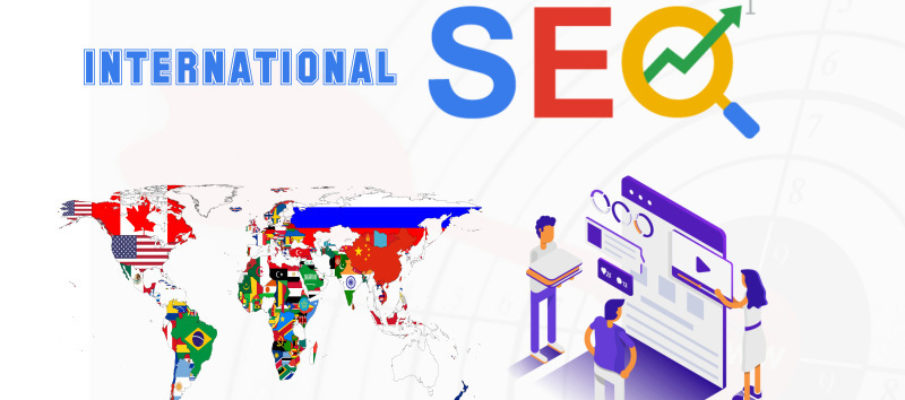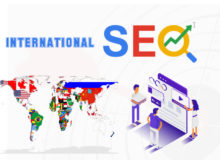If your online business is doing well in your country, you should consider expanding into international markets. However, to be successful in new markets, additional investments in SEO are required. You better think international SEO, or multilingual SEO, if you want to make sure your website is found and used well in other countries! Here I explain what international SEO is, why it is important and in what elements it is composed.
What is international SEO?
International SEO is about offering content optimized for multiple languages or multiple locations. Let’s explain this with an example. Imagine you have an online store – you sell WordPress plugins in many countries. In order to increase its sales in Germany, it has decided to translate its content into German and create a German website. You now have two variations of the same page: the English version and the German version. Pretty easy, would you say? Well, there is more.
In particular, if you want to target countries with similar languages or countries with multiple languages, this presents some challenges. Let’s take a look at the situation shown in the image below. This is a simplified example; Obviously, there are many more potential audiences than we include, such as users from the UK.
Obviously, you want people who search in German to be directed to the German website. You may even want to have a special site for German speakers in Switzerland. Of course, it would also be better to have a French alternative for Francophones in Switzerland.
For now, let’s say you don’t have the resources to do this. In this case, it’s probably best to send French-speaking Swiss users to the English page. Also, you need to make sure to direct everyone to your site in English as they speak English instead of German. In such a scenario, you need to create and implement a multilingual and international SEO strategy.
Since it is not easy to get the correct ranking of a website in the correct market, we decided to undertake an international SEO training! In this course, we will take you step by step through all the important elements of multilingual SEO. Do not miss it!
SEO a Why is international thing?
They want their website to be found on Google. With a standard SEO strategy, you optimize your content for only one language: the language your website is written in. However, sometimes you want to target audiences in multiple countries and regions. These audiences are likely to be similar, but there are always differences.
It gives you an opportunity and you can take advantage of international SEO to take advantage of it. By targeting your target groups specifically, it is easier to meet their needs. One of those differences is the language they speak. When you make your website available in multiple languages and target specific regions, you accomplish two things:
• Expand your potential audience;
• You improve your chances of being classified for a certain region and in several languages.
With that in mind, let’s take another look at the example discussed above. By creating a German version of your original English website, you have made it possible for users searching in German to find your product.
Ultimately, international SEO is about meeting the needs of its users.It all seems pretty clear, but multilingual SEO can be tricky. A lot can go wrong and a bad multilingual implementation can damage your ranking. It means that you have to know what you are doing.
One of the biggest risks of multilingual SEO is duplicate content. If you present very similar content on multiple pages of your website, Google will not know what content to show in search engines. Duplicate pages compete with each other, so the individual page rank drops. You can avoid this particular problem with hreflang, a part of your international SEO strategy. But multilingual SEO is much more than that. Let’s discuss the most important aspects below.
International SEO: content, domains and hreflang
Content for international sites
Content is an essential part of your multilingual SEO strategy. If you want to write content in different languages, you will need to adapt existing content or create new content. Customizing your content while maintaining good SEO can be challenging.
Your content strategy should always start with keyword research for the region and language you are targeting. You can’t just translate your keywords with Google Translate or other AI translation tools. You have to get into the mind of your new audience. You need to know what words they are using. The same words can have different meanings in the languages used in more than one country, as explained above.
Translating content is also a challenge. Be aware of the cultural differences that exist between countries. Otherwise, your copy won’t appeal to your new audience. Whenever possible, you should have your translated content translated, or at least verified, by native speakers to avoid embarrassing mistakes. For a full list of things to consider when translating content, check out Marieke’s post on Creating SEO Optimized Copy in a Foreign Language.
Domain structure for international sites
To successfully target your target groups, you need to think about the pages they should land on. There are several ways to define the domain structure that you want to use. Do you need ccTLD (country code top-level domain) like example.de for Germany? Or could you create subdirectories for countries like example.com? Or are you using a subdomain like de.example.com? And the countries where several languages are spoken? How to configure a domain structure for these countries?
There is a lot to consider when making these decisions. This is where the domain authority and size of your business come into play, as well as the marketing capabilities in the target countries. If you really want to dig into these, you should check out our international SEO training, which you can find on our Yoast SEO Academy!
Hreflang
<link rel="alternate" href="https://www.examplesite.com/" hreflang="en" />
<link rel="alternate" href="https://www.examplesite.com/en-gb/" hreflang="en-gb" />
<link rel="alternate" href="https://www.examplesite.com/en-us/" hreflang="en-us" />Hreflang is the technical implementation that you should implement if you
offer your content in multiple languages. Simply put, tell Google which result
to show who in search engines. However, it is not as easy as it sounds and it
often goes wrong, even on large websites.






